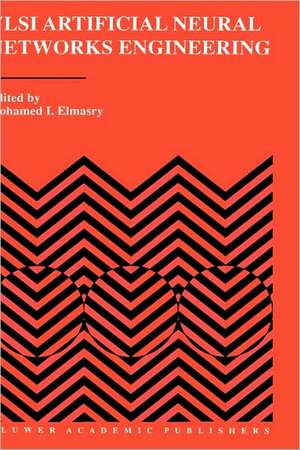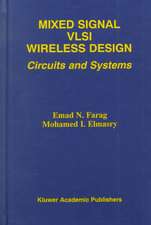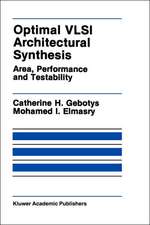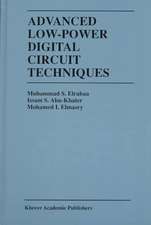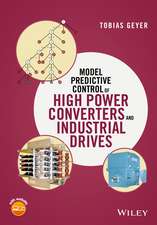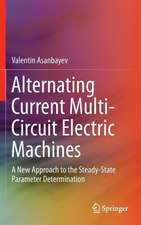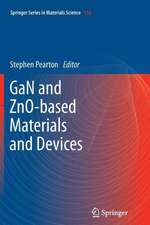VLSI Artificial Neural Networks Engineering
Editat de Mohamed I. Elmasryen Limba Engleză Hardback – 30 noi 1994
| Toate formatele și edițiile | Preț | Express |
|---|---|---|
| Paperback (1) | 946.87 lei 43-57 zile | |
| Springer Us – 6 oct 2012 | 946.87 lei 43-57 zile | |
| Hardback (1) | 953.03 lei 43-57 zile | |
| Springer Us – 30 noi 1994 | 953.03 lei 43-57 zile |
Preț: 953.03 lei
Preț vechi: 1162.23 lei
-18% Nou
Puncte Express: 1430
Preț estimativ în valută:
182.36€ • 190.88$ • 151.78£
182.36€ • 190.88$ • 151.78£
Carte tipărită la comandă
Livrare economică 31 martie-14 aprilie
Preluare comenzi: 021 569.72.76
Specificații
ISBN-13: 9780792394938
ISBN-10: 0792394933
Pagini: 329
Ilustrații: XV, 329 p.
Dimensiuni: 155 x 235 x 21 mm
Greutate: 0.66 kg
Ediția:1994
Editura: Springer Us
Colecția Springer
Locul publicării:New York, NY, United States
ISBN-10: 0792394933
Pagini: 329
Ilustrații: XV, 329 p.
Dimensiuni: 155 x 235 x 21 mm
Greutate: 0.66 kg
Ediția:1994
Editura: Springer Us
Colecția Springer
Locul publicării:New York, NY, United States
Public țintă
ResearchCuprins
1 An Overview.- 1.1 Introduction.- 1.2 Biological Neural Networks.- 1.3 Artificial Neural Networks (ANNs).- 1.4 Artificial Neural Network Algorithms.- 1.5 Supervised Neural Networks.- 1.6 Unsupervised Neural Networks.- 1.7 Neural Network Architectures and Implementations.- 1.8 Book Overview.- 2 A Sampled-Data CMOS VLSI Implementation of a Multi-Character ANN Recognition System.- 2.1 Introduction.- 2.2 ANN Implementation Techniques.- 2.3 Developed CMOS Circuits for ANNs.- 2.4 The Prototype MLP ANN Model Architecture.- 2.5 MLP ANN Model Simulations.- 2.6 ANN Circuit Simulations.- 2.7 The Developed VLSI Architectures.- 2.8 The Developed Two-Character ANN Recognizer.- 2.9 The Proposed Multi-Character ANN Recognition System.- 2.10 Conclusions.- 3 A Design Automation Environment for Mixed Analog/Digital ANNs.- 3.1 Introduction.- 3.2 Mixed Analog/Digital ANN Hardware.- 3.3 Overview of the Design Automation Environment.- 3.4 Data Flow Graph.- 3.5 The Analyzer.- 3.6 The Design Library.- 3.7 The Synthesizer.- 3.8 Design Examples.- 3.9 Conclusions.- 4 A Compact VLSI Implementation of Neural Networks.- 4.1 Introduction.- 4.2 The Building Blocks.- 4.3 The Circuit Implementation Example.- 4.4 Expanding the Network with Multiple Chips.- 4.5 Conclusions.- 5 An All-Digital VLSI ANN.- 5.1 Introduction.- 5.2 Neocognitron Neural Network Model.- 5.3 Digi-Neocognitron (DNC): A Digital Neural Network Model for VLSI.- 5.4 Character Recognition Example.- 5.5 Advantages for VLSI Implementation.- 5.6 Conclusions.- 6 A Neural Predictive Hidden Markov Model Architecture for Speech and Speaker Recognition.- 6.1 Introduction.- 6.2 Automatic Speech Recognition Methodologies.- 6.3 An ANN Architecture for Predictive HMMs.- 6.4 Discriminative Training of the Neural Predictive HMM.- 6.5 Speaker Recognition Using the Neural Predictive HMM.- 6.6 Conclusions.- 7 Minimum Complexity Neural Networks for Classification.- 7.1 Introduction.- 7.2 Adaptive Probabilistic Neural Networks: APNN and ANNC.- 7.3 Bayesian PDF Model Selection.- 7.4 Maximum Likelihood and Maximum Mutual Information Train-ing.- 7.5 Experimental Results.- 7.6 The Adaptive Feature Extraction Nearest Neighbor Classifier “AFNN”.- 7.7 Conclusions.- 8 A Parallel ANN Architecture for Fuzzy Clustering.- 8.1 Introduction.- 8.2 Fuzzy Clustering and Neural Networks.- 8.3 Fuzzy Competitive Learning Algorithm.- 8.4 Mapping Algorithm Onto Architecture.- 8.5 Fuzzy Clustering Neural Network (FCNN) Architecture: Processing Cells.- 8.6 Comparison With The Fuzzy C-Mean (FCM) Algorithm.- 8.7 Conclusions.- 9 A Pipelined Ann Architecture for Speech Recognition.- 9.1 Introduction.- 9.2 Definition and Notation.- 9.3 PNN Architecture: Processing Stages.- 9.4 Case Studies.- 9.5 Performance Analysis.- 9.6 Conclusions.
